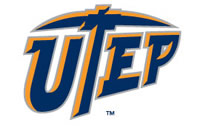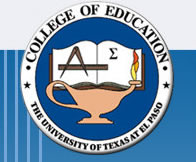
Bill Robertson, Ph.D. - Classes
Teacher Education Department
SIED 5323 - Societal Context of Science Education
PBL Main Web Page Content Guidelines for SIED 5323
Title
Utilize a Heading that will immediately grab the attention of the reader and promote a connection to the overall theme – For example “Who’s the Polluter” or “Anarchy Science”.
Hook
The hook is an introductory paragraph that will cause the reader to take an interest to the subject as well as find a relevant connection to their perspective. The hook can be in the form of questions or brief text that serves to
Introduction with Real World Connection
Often viewed as a scenario, this can be a short series of paragraphs that expand on the hook to the reader and explicitly make the connection between the enduring knowledge and real world examples that are appropriate for the student audience. This should be engaging and further drive the student to seek answers and dive deeper into the topic.
Guiding Question(s) linking to Enduring Knowledge
Open ended and student centered to allow the learner to explore and explain through investigations and research opportunities.
Educational Components Utilized in PBL
What types of interactions will the PBL focus on within the context of the classroom learning situation? major areas have been identified in the area of educational components that include constructivism, Socratic dialogue, critical thinking, collaborative relationships, hands-on/minds-on activities, multidisciplinary approaches to learning and State and National Standards and Benchmarks. Each area is distinct as a pedagogical tool, yet the overall effect of the integration of these methodologies results in a powerful and unique teaching approach that is effective in the development of student learning.
Integration of Technology in PBL
In order to have a successful PBL, the learning environment should promote the use of telecommunications for research and collaboration with other participants. For example, students can demonstrate their acquired knowledge through portfolios and multi-media presentations. This helps to bring the issue alive and engages the students in active learning. Appropriate software and training is essential in providing a positive telecommunications environment for both you and your students. Sound technical support is vital in keeping your lines of communication open.
In reference to this class, technology can be defined as computers with Internet access, multi-media tools, and other software programs that will aid in the acquisition, collaboration and communication of information. The use of technology to foster and develop skills of critical thinking is an area of great potential in education. Researchers, including Garcia (1994) and Fitzgerald (1997) have indicated that technology as has been defined above, when integrated properly into school curriculum, may well improve the critical thinking skills of students, and the abilities to apply critical thinking to information access on the Internet.
Assessment Plan for PBL
Assessment has been defined as methods utilized to clarify and understand the level of knowledge that a learner has obtained. This broad definition implies that assessment can range from the simple to the complex, from a teacher's subjective judgment based on student observation to an all-day standardized test. The level of knowledge implies that what a student knows constantly changes over time, and that we as instructors can make judgments about student achievement. Assessment decisions affect grades, instructional needs, advancement, placement, and the curriculum.
Good assessment information provides accurate estimates of a learner's performance and enables instructors to make appropriate decisions. The extent to which an assessment actually measures what it is intended to measure is the primary characteristic of test validity and allows instructors to use this method to assess students' skills and abilities. Test validity is directly linked to the purposes for which an assessment is used. Thus, a test might be valid for one purpose but inappropriate for other purposes. Especially in the area of open-ended questioning where a final "correct" answer is open to debate and depends upon the sources utilized. Evidence of validity needs to be gathered and shown explicitly for each purpose for which an assessment is used. Yet, test taking is often over-emphasized and often results in no real transferable skill that can be demonstrated outside of an examination. The results of a good test or assessment, in short, represent how a student performs on the objective which those items were intended to assess but tells little about how students perform on unique situations that the learner has never confronted previously.
Desired Community Role within the PBL
Within a given community, there are a plethora of individuals who will be valuable resources during the development and implementation of your curriculum. Many of these individuals will be glad to act as on going mentors during the program. As an area to brainstorm within the topic issue, one should begin to think of local business people, agencies, parents, etc. who are or have been involved with some aspect of the issue.
After determining a real world issue on which you want to focus the development of your curriculum, you will need to brainstorm what you currently know about the issue. Enlist suggestions and ideas from colleagues. After developing a good idea of what direction to take the curriculum, begin to identify areas that are considered content strong and content weak. Those identified areas, which are labeled content weak, should be the focus for seeking experts to aid and guide the curriculum development.

Bill Robertson, Ph.D. (robertson@utep.edu)
Teacher Education Department, College of Education, University of Texas at El Paso